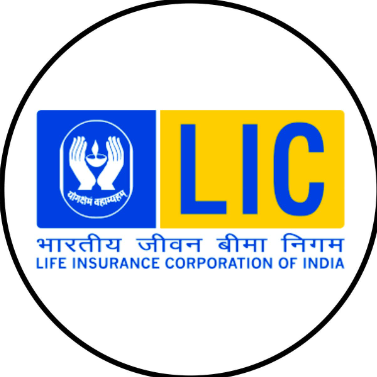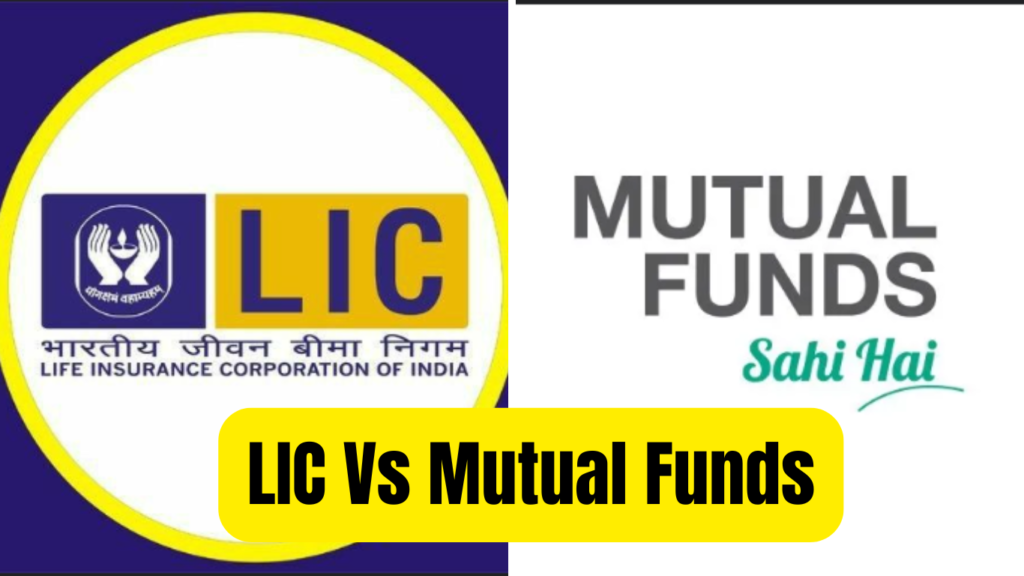Higher return investment is generated in mutual funds than LIC. There is tax free insurance benefits and tax deferred growths which are offered at LIC. LIC is very helpful for the investors who have long term outlook and varieties of options are offered at Indian financial markets. Mutual funds and LIC have long term horizons and offer various benefits. For creating wealth mutual funds can be generated. For prioritising the family’s financial security LIC can be beneficial.
Definition Of LIC

The full form of LIC is Life Insurance Company. It is a public sector life insurance provider which has led the industry for several decades. It offers life insurance policies which are designed for protecting the family of policyholders in a financial way in the insured death of individuals. If the person who was holding the policies had passed away, the insurers pay out the death benefits guaranteed under the plan. Maturity benefits are paid to the policies which depends on the type of life insurance.
Table of Contents
Definition of Mutual Funds

Mutual funds are the portfolio fund vehicles where the collective capital from investors is used for putting a basket of assets together. Debt instruments, equity stocks, money market instruments and even gold are the assets included depending on the type of mutual funds.
Difference between LIC and mutual funds
| Particulars | LIC | Mutual Funds |
| Primary purpose | Life insurance coverage and financial security are offered in LIC | Investment growth through market linked assets are offered at mutual funds |
| Risk involved | In LIC there is low risk as guaranteed death benefits are involved | There is high risk in mutual funds which varies based on the market conditions and type of fund |
| Returns expected | Returns and bonuses are fixed and are lower than potential equity returns | It has the potential for higher returns which is based on the market performance |
| Investment focus | LIC is very stable and secure | It has capital growth |
| Tax benefits | Life insurance policies offer tax benefits such as Per Section of the 80C of the Income Tax Act | Equity Linked Saving Scheme are offered at mutual funds which are under section 80C of the Income Tax Act |
| Liquidity | It has lower liquidity as life insurance is a long-term process | Liquidity is easier in mutual funds |
| Costs and charges | Premium is the primary charge involved in LIC | Management fees, exit loads and other fund related charges are involved in mutual funds |
| Sustainability | It is suitable for the investors who want to secure the families in a financial way | It is suitable for the investors who create wealth from market connected investments |
Read More
Top 7 Sectors for Jobs in 2025
Effect of Internet on Modern Society
LIC vs Mutual Funds Which One is better
LIC policies may be beneficial if: –
- Life insurance coverage is seeker for protecting the family in absence
- A minimal risk investment is preferable with guaranteed returns
- Tax benefits on investment can be enjoyed
- A long-term saving option such as maturity benefits can be searched.
- Predictable returns are expected without dealing with market fluctuations.
Mutual funds may be beneficial if: –
- Higher returns are aimed through market linked investments.
- There is an elevated risk of tolerance and a market volatility.
- Flexibility and liquidity are prioritised under investment.
- A wide range of options are offered for diversifying the investment portfolio.
- The power of compounding through SIP investments can be generated.
Difference between mutual funds and LIC policies
Various kinds of benefits are offered in LIC policies and investors. People should be aware of their benefits for understanding the investment revenue. Several advantages around financial security and stability are offered in LIC policies. Life insurance coverage is provided and ensured that the policyholder’s family is protected in a financial way after the policyholder’s expire. This coverage occurs in the form of death benefit which is a guaranteed payout to the nominee.
Some LIC policies come with maturity benefits where a large sump of money is received to the policyholders if they survive the policy term. Tax benefits are offered to the policies under 80C of the Income Tax Act which makes to plan the tax in an attractive way. Mutual funds are favoured for their potential for generating high returns through diversified market connected with investments. Investors are allowed for pooling their resources for investment in broad range of assets such as equities, bonds, and money market investments.
Flexibility and liquidity are offered in mutual funds so that investors can be allowed to buy or sell their products when needed. The investment decisions through market analysis must be made sure by professional fund management.
Types of LIC Plans
The following types of Life Insurance Plan are offered in LIC: –
- Term Insurance Plans: – High coverage is offered at premiums which are easy to afford. Death benefits and no maturity benefits are offered at Term Insurance Plans.
- Endowment Plans: – These endowment plans are also known as saving plans. They come with built in savour components. If the policyholders survive the terms of policy, these plans get offered in the form of maturity benefits.
- Money- back Plans: – if policyholders survive the terms of policies, money back plans are offered in LIC policies.
- Whole life insurance plans: – In whole life insurance plans life insurance coverage is offered to the policyholders until they become 99 or 100 years of age.
- Pension Plans: – These plans are designed for offering the advantages of regular pension income to the people holding the policyholders in after retirement stage.
- Health Plans: – Coverage for medical expenses on health and medical facilities are offered for specific illnesses or diseases.
- Micro Insurance Plans: – These plans are designed for policyholders with low incomes. Basic coverage at low premium is offered at micro insurance plans.
Types of mutual funds
- Equity mutual funds: – Stocks are invested primarily and high return through capitalisation are directed. It is suitable for people who have higher risk of tolerance and long-term horizon. Various types of equity funds such as small cap, middle cap and large cap funds are offered.
- Tax saving Equity funds: – Tax benefits under 80C are offered in tax saving equity funds. The amount which is invested can be deducted to Rs 1.5 lakhs.
- Debt mutual funds: – Corporate bonds, government securities and other debt instruments should be invested in debt mutual funds. They are suitable for conservative ones who seek stable return with lower risk.
- Hybrid mutual funds: – A mix of equity and debt instruments can be invested for hybrid mutual funds. They are suitable for investors who seek moderate risk and diversified exposure.
- Money market funds: – Short term debt instruments are funded, and high liquidity of minimal risks are offered. These funds may be ideal for the people who are searching for safe place.
- International funds: – Foreign markets are invested and benefits of diversification beyond domestication is provided.
- Funds of fund: – Other mutual funds are offered by diversifying exposure across various categories. These are preferred by investors who want a one stop solution for diversifying the investments.
FAQs
Who started the mutual fund in India?
RBI started the mutual fund in India in 1963.
Who started LIC in India?
The Oriental Life Insurance Company started LIC in India in 1818 in Kolkata.
Which one is better LIC or mutual funds?
Both financial products have distinct benefits. Financial security and death benefits are offered in LIC. Market connected schemes are offered in mutual funds.


